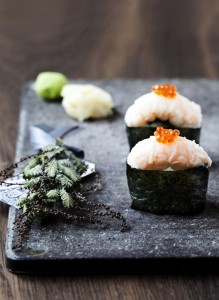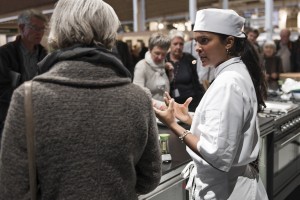
In Japan, seaweed has always been part of Japanese cuisine. It is a staple food like grains in European cuisine.
Just like in Europe, there is not just one type of grains. There are many types of grains and some of them are better suited for pasta than bread.
The same applies to seaweed. In Europe, most people have opened their eyes to sushi seaweed, which is a booster when it comes to the amount of vitamins and minerals.
Seaweed has its origins in the Japanese cuisine of the poor. At that time, it was Japanese fishermen who collected the seaweed for use in cooking. The fishermen had no refrigerator, so to extend shelf life the seaweed was dried. Afterwards it was eaten with raw fish and rice.
In Japan, there are many different types of seaweed, which are used in many different dishes in Japanese cuisine. Nori is used for sushi, which is a specific type of seaweed that is primarily used for sushi.
On the Sushi Course for Beginners you will learn which type of sushi nori is best suited for sushi. You will also learn step by step how to make tasty sushi.
Read more about Sushi course for beginners
_
Zoë has lectured and held sushi courses for A. P. Moller – Maersk, Hugo Boss Nordic, Novo Nordisk, Novartis, Velux, Gorrissen Federspiel, Beierholm revision, Elbek & Vejrup and many more.







